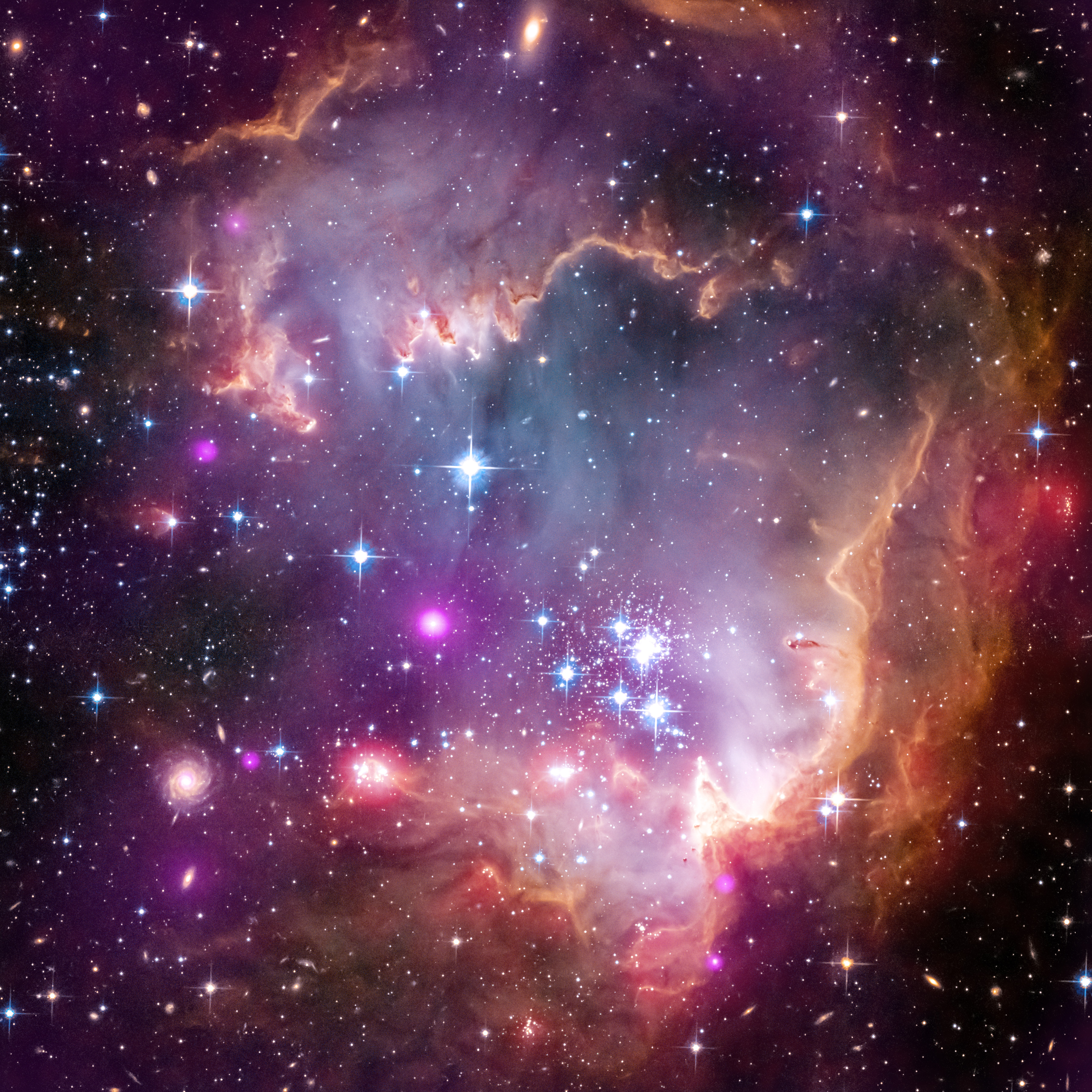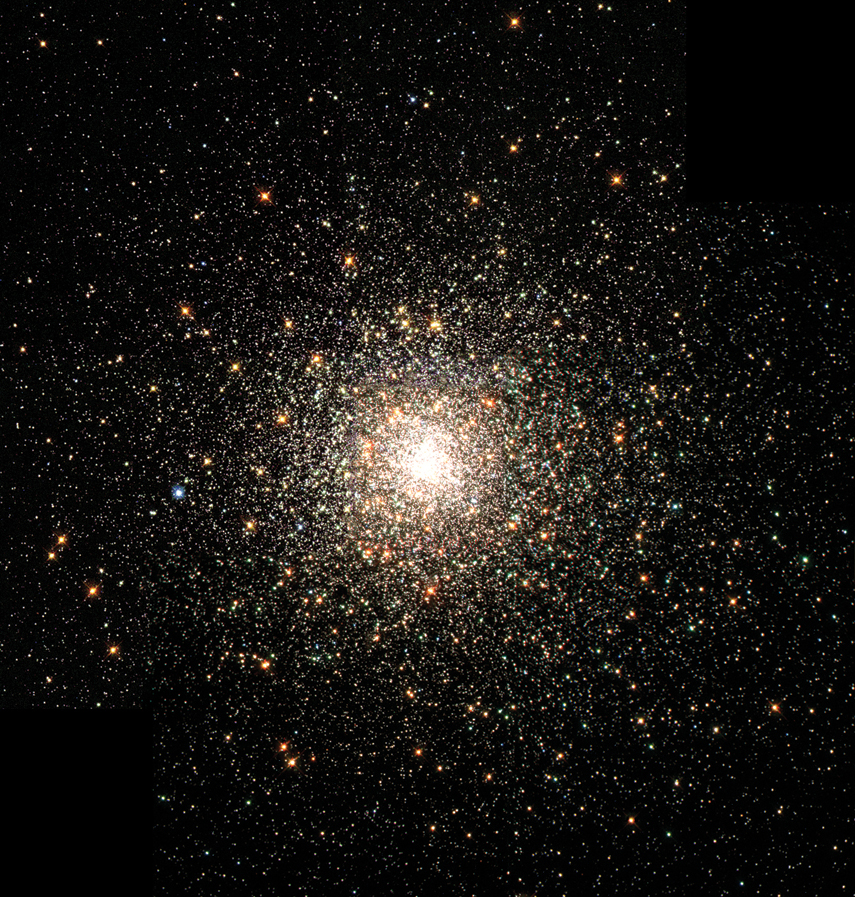Star cluster is a group of stars held together by their gravitational attraction to one another. The stars in a cluster move as a group. They share the same chemical composition. They appear to have formed at the same time. The best-known star cluster, the Pleiades (PLEE uh deez), appears in the constellation Taurus. The unaided eye can see six stars of the Pleiades. A small telescope reveals hundreds more.
Kinds of clusters.
There are three types of star clusters, open clusters, globular clusters, and stellar associations.
Open clusters,


such as the Pleiades, are loose collections of stars. An open cluster may include a few hundred to a few thousand stars. The stars are spread over a roughly spherical region 5 to 10 light-years in diameter. A light-year is the distance that light travels in a vacuum in a year—about 5.88 trillion miles (9.46 trillion kilometers).
The open clusters in our own galaxy, the Milky Way, lie in the spiral “arms” of stars that form the galaxy’s disk (see Milky Way (Shape of the galaxy) ). These clusters orbit the galaxy’s center. They typically move at speeds of around 200 kilometers per second (450,000 miles per hour). Even moving at such high rates, they can take 250 million years to complete one trip around the galaxy.
All stars consist primarily of hydrogen and helium. But more than 2 percent of the atoms in open-cluster stars are of heavier elements. These include mainly carbon, oxygen, and nitrogen atoms. The stars also have some magnesium, silicon, iron, nickel, and other elements. Most of these heavier atoms originated in exploding stars called supernovae. Open clusters thus appear to have formed from clouds of gas and dust produced by supernovae.
Globular clusters
contain many more stars than do open clusters. A globular cluster can include tens of thousands to a few million stars. The stars form a tight ball a few tens of light-years in diameter. In the Milky Way, globular clusters are not confined to the galaxy’s disk. They appear to occur randomly in a sphere stretching 50,000 light-years from the center of the galaxy.
The stars in globular clusters contain a much smaller proportion of elements heavier than helium than do those in open clusters. Many globular clusters appear to have formed early in the history of the universe, around 13 billion years ago. Few supernovae had occurred by then, so little of the heavier elements existed.

Stellar associations
consist of stars gathered more loosely than those in open clusters. A stellar association features a few tens to a few hundreds of stars. The stars are spread over tens of light-years. An association has so few stars for its size that their mutual gravitational attraction cannot hold the association together indefinitely. The stars in an association will drift apart from one another within a few million years after their formation.
Like open clusters, stellar associations contain large proportions of heavy elements. In the Milky Way, associations appear only in the galaxy’s spiral arms.
Ages of clusters.
Astronomers measure the age of a star cluster by the brightness and color of its stars. The more mass (amount of matter) a star has, the hotter and bluer it shines. Massive stars also use up their hydrogen fuel and burn out more quickly. Astronomers can thus use a star’s brightness to determine its total lifetime. Because the bluest stars will be the first to burn out, the lifetimes of the bluest surviving stars approximate the age of the cluster.
Most open clusters are tens of millions of years to a few billion years old. The Pleiades appear about 100 million years old. Globular clusters are much older. They have ages of up to 13 billion years.
See also Cosmology (The ages of stars).
